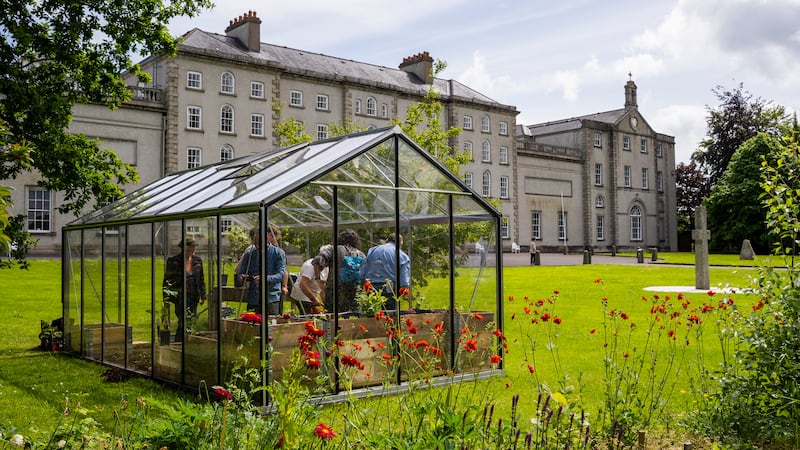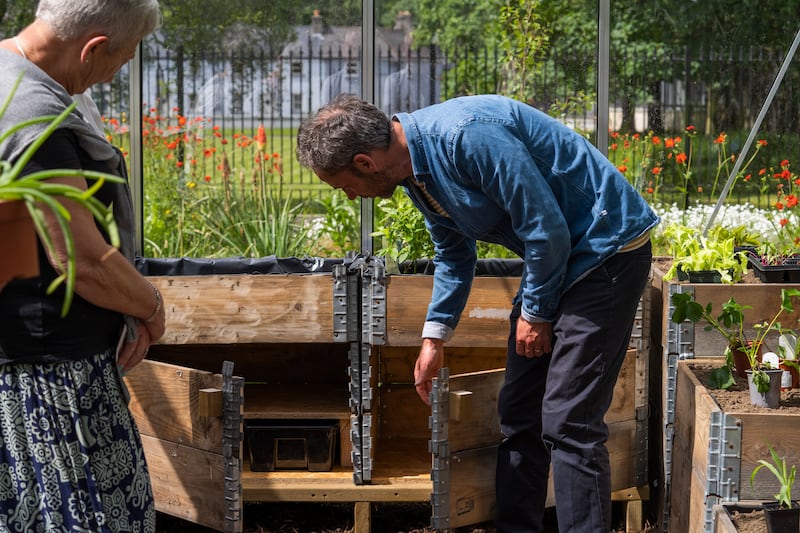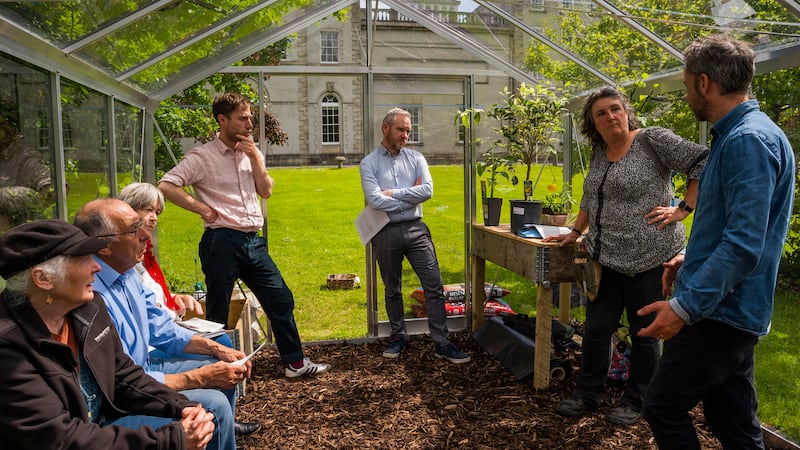Carlow town is to host an innovative public art installation designed to make people think about where their food comes from - and the energy sources behind it.
Future Light from Distant Stars, a partnership between artist David Beattie and VISUAL Centre for Contemporary Art, is one of five arts projects taking place nationwide supported by a creative new climate awareness initiative from ESB. The €250,000 ESB Brighter Future Arts Fund aims to drive positive community engagement in climate change and sustainability.
The installation, to be unveiled in June on the grounds of Carlow College, looks at a glance for all the world like a common garden greenhouse packed with produce. So far, so traditional.

But knit into the fabric of the building is a series of colourful high-tech, dye-sensitive solar panels. As well as speeding up the growth of exotic fruits, the innovative panels illuminate the greenhouse at night in a spectral hue.
What Gerry Adams really said to David Trimble in the loo during peace talks
Is Trump a fascist? Kamala Harris is among a growing number who say yes
Seán Moncrieff: I hate running. I tried it and it didn’t do me any good. I can’t be alone feeling like this?
The Dublin couple who built their house in a week
Artist Beattie applied to the ESB Brighter Future Arts Fund, having come across it via the Business to Arts website. Business to Arts, which has partnered with ESB to deliver the ESB Brighter Future Arts Fund, is a charity that develops strategic creative partnerships between the corporate and cultural sectors.
“As an artist you are always looking for funding opportunities to realise work,” Beattie says. “I’d been thinking about and researching this idea for some time.”
The inspiration came during his time as artist in residence at UCD’s School of Physics. “A lot of my work is informed by the world of physics and scientific thinking, and in 2017 one of the things I was working on was solar cells. In particular, I was working on technologies in which plant dyes, such as blackberries and blueberries, are used in sensitive solar cells, which are typically silicone based.”

The use of organic materials in the technology intrigued him.
“The sun powers plants through photosynthesis, and solar panels have a very similar process. I was drawn to the comparison between the natural world and the more futuristic renewable energy technologies. I’d been sitting on the idea of a greenhouse and solar panels for a while. The ESB fund crystalised it for me because there is a very direct link between the ESB and future thinking around energy, so I applied,” he says.
VISUAL is on the grounds of Carlow College, an area with plenty of space and lots of opportunities for passers-by to see the illuminated greenhouse, and for local people to come together in it.
“Community engagement was central to the project,” Beattie says. “We recently did our first workshop in the greenhouse, with a plant exchange and planting.

“It’s an ongoing process of engagement, initiating the idea of collective care. Some of the plants have been donated, others have come from seeds planted by local school children,” says Beattie, an avid gardener who planted a lemon tree in the greenhouse, in order to undertake experiments with local school children to show how fruit and veg can store and release energy, like a battery.
The greenhouse has tea and coffee plants too, prompting thoughts about the distances food and drink we take for granted travels.
“I’ve grown veg in my own garden for years, so it was always in the background, while my work was primarily sculptural. But the emergency around climate crisis has shifted the things that I do in my everyday life into my art practice, in a holistic crossover,” he explains.
The initiative is a good match for VISUAL Carlow as well, says curator Benjamin Stafford. “The environment is extremely high on the agenda at VISUAL and we’ve taken tangible steps to mitigate our impact on the environment, from keeping beehives to community gardening, to active composting and recycling programmes.
“The ESB Brighter Future Arts Fund is wonderful if it prompts people to think about and question where their food comes from and the energy usage involved, and grows awareness about different sources of energy.”
Bevin Cody, corporate reputation manager at ESB, says: “The idea for the ESB Brighter Future Arts Fund came in 2020 when we were looking at our response to Covid and what we could do to help communities. We recognised the really big need in the arts community and wanted to help and support them.”
The arts sector has a unique capacity to engage these really complex conversations in a really creative way
— Bevin Cody, ESB
ESB worked with its charity partner Business to Arts to figure out the best way to work with the arts community in a way that aligns with its own strategy.
“We saw an opportunity around climate change, empowering communities to live in a more sustainable and efficient way and prompting that conversation,” Cody says. “The arts sector has a unique capacity to engage these really complex conversations in a really creative way. We saw it as an opportunity to use that creative platform to reach out and start these conversations and inspire people to take positive actions of their own.”
The €250,000 ESB Brighter Future Arts Fund was established, and artists and arts organisations were invited to submit project proposals for funding.
There were a number of criteria, she says. “We wanted to support collaborative projects within communities and we wanted to see how the project would extend beyond an art installation or a performance into a deeper conversation within the community, with an outreach element that bring members of the community together. The projects selected are great examples of these.”
ESB’s strategy is a sustainability strategy, Cody points out. “We have made a commitment to be NetZero by 2040. Part of that is through clean electricity but another part is through encouraging customers and communities to become more sustainable, more efficient, and to reach NetZero themselves.
“The whole subject of climate change and biodiversity crisis can feel overwhelming for people. This is a way to inspire people to talk about it, to see what they can do in a fresh way, and of doing so in a way that recognises the importance of arts in society generally.”




